From majestic polar bears to soaring white-tailed eagles, the wildlife in Greenland is some of the most exciting in the world. Despite its reputation for icy landscapes and harsh terrain, this beautiful country supports a rich array of species adapted to its unique environment.
Drawing on their experiences while travelling the length and breadth of Greenland to research their book, let the authors of the first standalone guide to Greenland from a mainstream publisher walk you through this unspoilt land.
An introduction to wildlife in Greenland
Greenland is the largest island in the world. Home to a population of only 56,000, there are vast areas of unfenced wilderness where wildlife roams free.
The world’s largest national park is located in Northeast Greenland; it is larger than both France plus Germany, or the states of Texas and Arizona combined. With little commercial shipping crossing the Arctic Ocean and an abundance of krill and small fish, the waters around Greenland are home to many marine mammals, including thirteen species of whales, as well as porpoise and dolphins.
For more information about wildlife, as well as more in-depth travel information, see our upcoming guide to Greenland here:
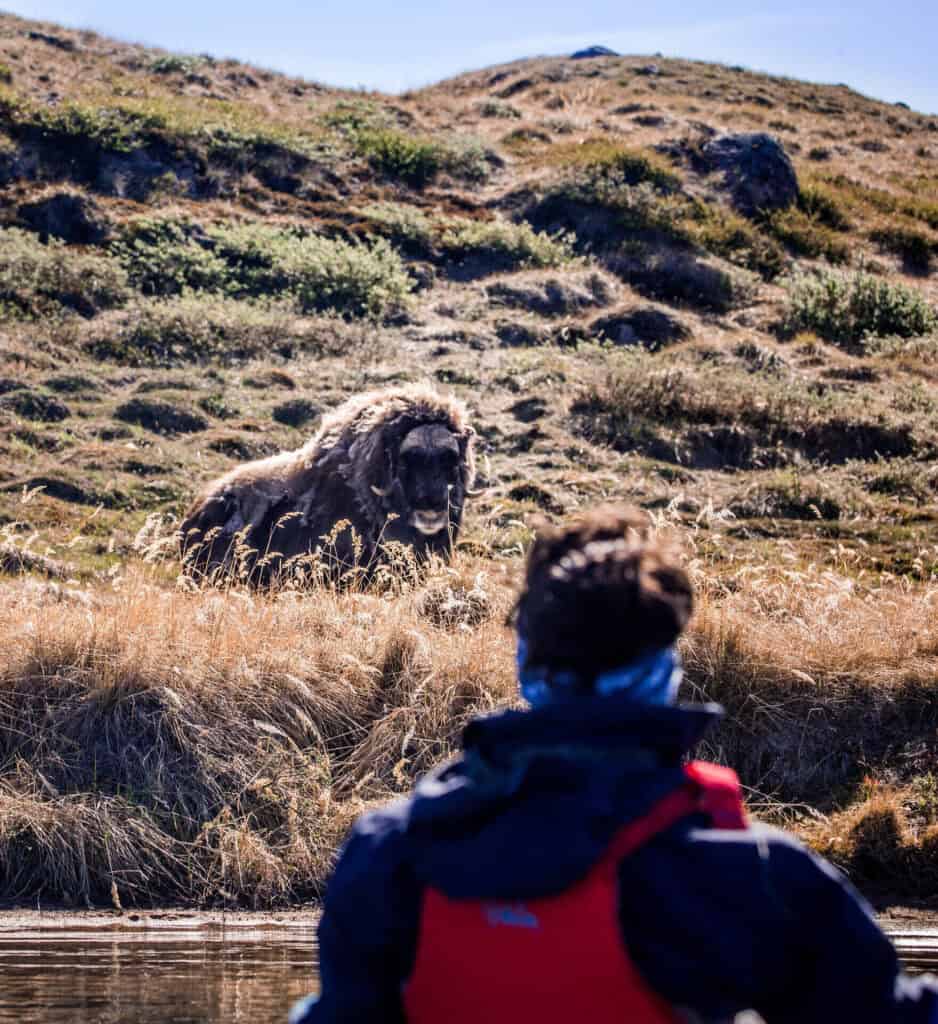
Land mammals in Greenland
Oxen
On land, the most prominent animals are reindeer and musk oxen. We saw our first musk oxen on our second day in Greenland, on the road from Kangerlussuaq to the ice sheet, travelling with Albatros Arctic Circle. Musk oxen have wonderful curved horns and look rather like hairy bison, although they are actually related to goats! They also have a shaggy beard which gives them their Greenlandic name Umimmak, meaning ‘long beard.’
There are thousands of musk oxen in Greenland and they are hunted for their meat and wool. The wool is truly extraordinary, softer than cashmere and eight times warmer than sheep’s wool. To live on the Arctic tundra, animals need a warm coat to survive winter temperatures which can fall below -40°C.
Perhaps our most memorable sighting of musk oxen was in south Greenland, from a flight with Sermeq Helicopters. We were flying up a pass into the mountains when we spotted a herd of about twenty oxen. Unfamiliar with helicopters, the oxen immediately formed a circle with every adult animal facing out and the young in the middle, their textbook defence strategy.
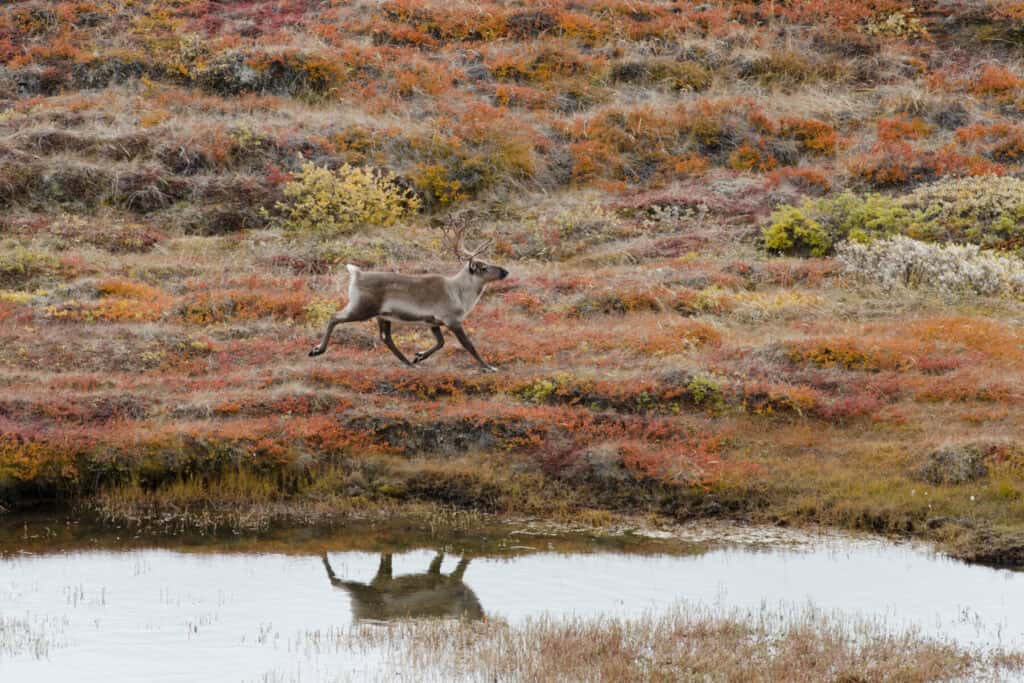
Reindeer
Reindeer, also known as caribou, are often seen in the Kangerlussuaq area and across West Greenland to Paamiut, as well as north of Qaanaaq. There are perhaps 100,000 roaming in the country; there is even a reindeer farm in south Greenland from where you can take trips into the tundra.
Unlike musk oxen, reindeer have poor eyesight but a very good sense of smell, so stay downwind if you want to approach them.
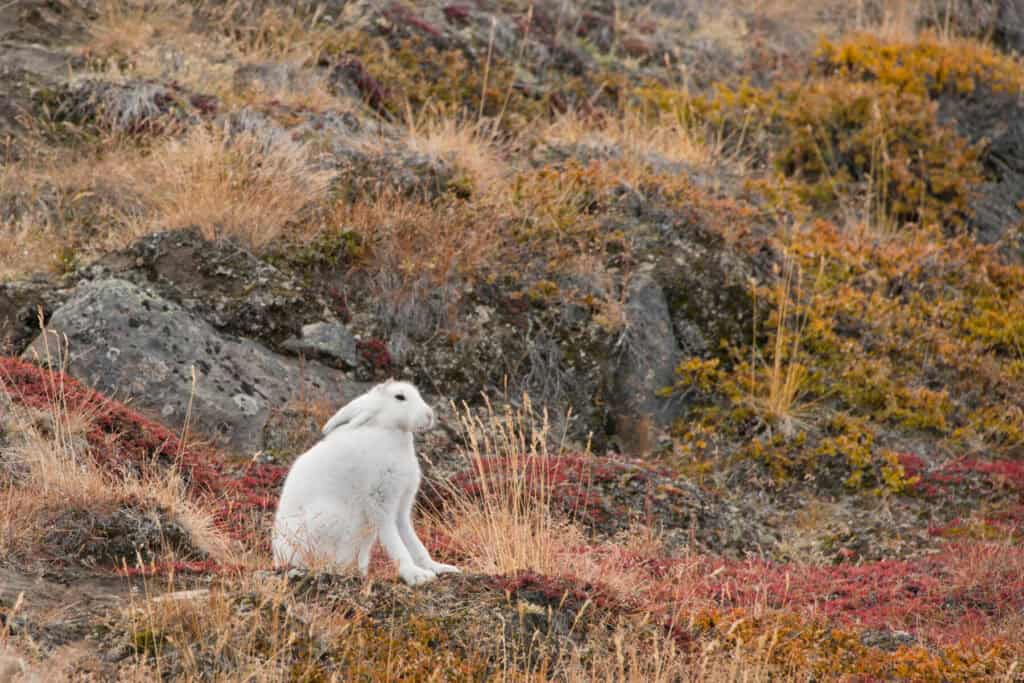
Foxes and hares
Two other mammals you may see are Arctic foxes and Arctic hares, they are, in fact, the most common land animals. Both have coats that change colour from brown in summer to white in winter. If you want to see these mammals sporting a particular coat, timing is critical.
One spring morning we spotted a fox, its coat having already changed to brown, hunting for lemmings on the white snow around a frozen fjord. Similarly, while driving in an all-terrain vehicle, we met a still-white hare running across the now green tundra.
Arctic wolf
There are two Greenlandic mammals that are especially hard to locate. One is the Arctic wolf, which is only found in the Northeast Greenland National Park. There may be as few as 50 wolves left in the park but, due to conservation efforts, their numbers are now rising.
The National Park can only be visited as part of an expedition, typically organised out of Ittoqqortoormiit with a local company such as Nanu Travel.
Looking for other exciting wildlife opportunities? See our round-up of the best safaris in Africa and our guide to discovering the Big Five in Botswana.
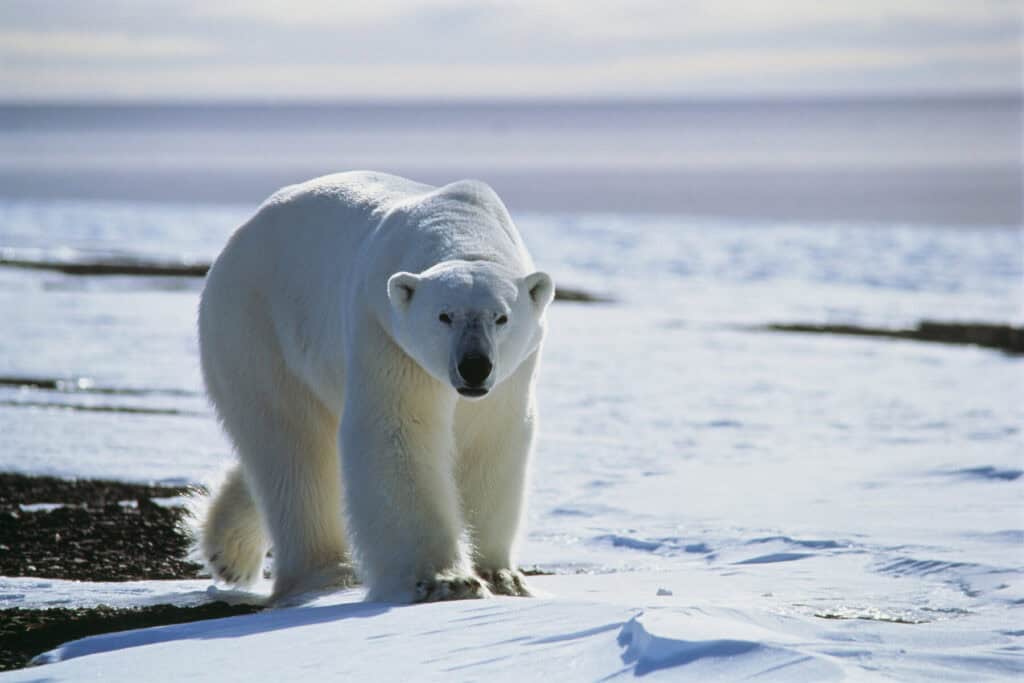
Polar bears
Also notoriously elusive are polar bears, Greenland’s largest land mammal. Again, they live in the more remote areas in the north and east of Greenland and you are unlikely to just happen across one.
Instead, join a specialist trip run by South Greenland Boat Charter or Sermilik Adventures. These companies use boats and dog sleds to track polar bears and increase your chances of a sighting. You may also be lucky enough to see one from a cruise ship when off the east coast.
Marine mammals in Greenland
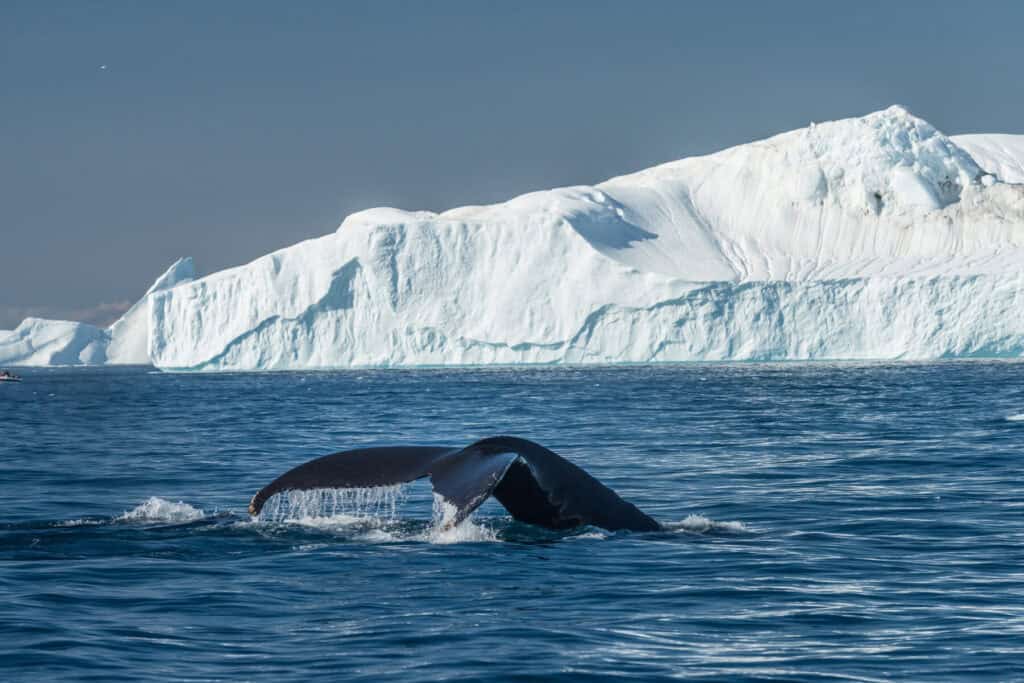
Whales
Many marine mammals live close to the Greenlandic coast. The first time we saw whales in Greenland, we were drinking hot chocolate and enjoying the view on a small island off Aasiaat. Our boat safari with Aasiaat Tours had been visiting a remote fishing community when we spotted humpbacks off-shore. A quick run back to the dock and soon we were off in our small boat to take a closer look.
There were three whales swimming together, repeatedly coming to the surface, taking a deep breath and then diving, their fluked tails flipping high into the air before disappearing. We kept a respectful distance – so as not to alarm them with our presence – and managed to stay with them for a while before they headed off, too fast and too deep for us to follow.
There are thirteen different species of whale in Greenland’s waters in summer, including the narwhal. These magnificent animals are often called the ‘unicorn of the sea’, owing to the single spiral tusk that protrudes up to 3 metres from their heads. Fin and bowhead whales are the largest that can normally be seen, although it is possible to spot a blue whale if you are lucky.
There are also porpoise and dolphins in Greenland’s waters; once, while travelling on the coastal ferry, we spotted a pod of dolphins shadowing the ship.
Top tips for whale watching in Greenland
Whale watching is possible from the shore in many parts of Greenland, even sometimes out of your bedroom window! The best time for whale watching is from May to September. Boat safaris, particularly in the Disko Bay area, offer a closer look and it is possible to sit in a boat with the engine off, watching and listening to the whales around you.
You can also do some whale watching when travelling on the coastal ferry, on cruise ships and from aircraft. On one light aircraft flight we saw many belugas, some with calves alongside them; belugas are easier to spot as they are nearly white.
For more information about when to travel – and what to know before you do – check out the GOV.UK Greenland travel advice.
Other sea mammals
Small sea mammals abound, including walrus and five different types of seal. Seals, like all of Greenland’s mammals, are still hunted and there are strict quotas to ensure that numbers remain stable. There are millions of seals but they are not easy to spot; when on a boat safari watch out for them resting on an ice floe or popping their head up above the water to take a look around.
Seal meat has always been an important food in Greenland and is still eaten today, often smoked. The skins have been used for thousands of years to cover traditional kayaks and shelters, as well as to make clothing and boots. If you are in Qaqortoq, don’t miss visiting Greenland’s only sealskin tannery where you can see the garments being made.
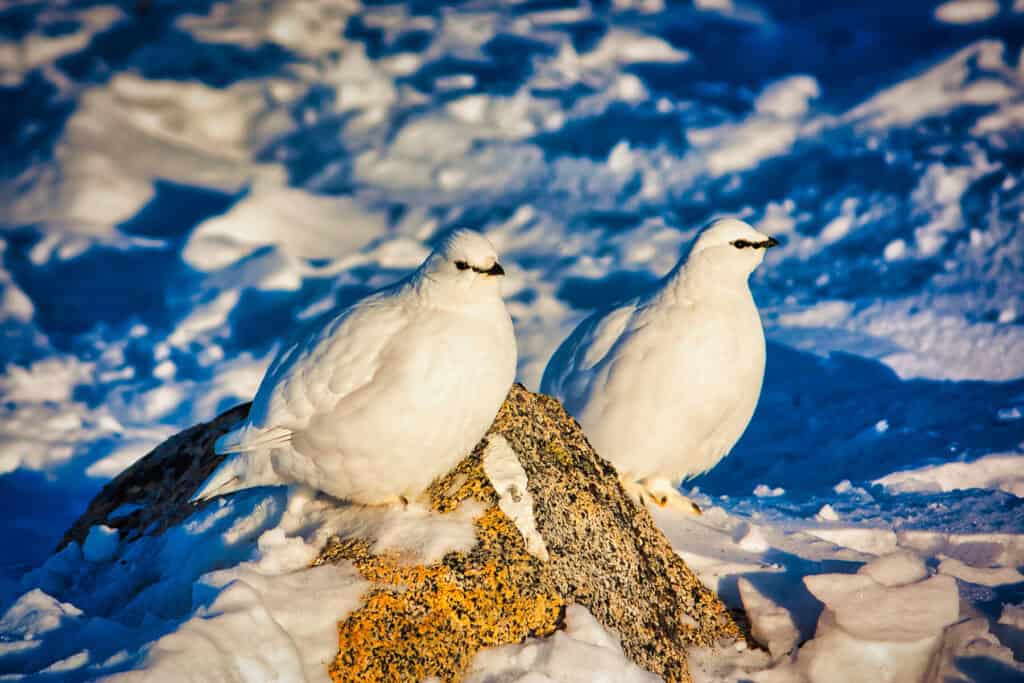
Birds in Greenland
Like the whales, many birds migrate north to Greenland for the summer; there are perhaps only 30 species of bird that live here all year. The two small birds that you are likely to spot first are the grey and black northern wheatear and the black and white snow bunting, both of which hop around the rocks and shoreline. Another common bird is the noisy black raven, you may hear them before you see one.
On the tundra, ptarmigan are common but tricky to see until they move. Their camouflage is excellent and they even change colour from summer to winter. The most common bird of prey is the white-tailed eagle; you’ll never tire of watching these magnificent birds glide across land and sea in search of prey. Two other birds of prey that may be seen are the peregrine falcon and gyrfalcons; both are usually spotted in mountainous areas.
A sea duck worth watching for is the king eider, which has spectacular head plumage in blues, greys and greens around his orange and red bill. The Sisimiut area and Nuuk Fjord are both good places to spot king eiders.
Puffins also breed in Greenland and, from June to September, Nuuk Water Taxi and Tupilak Travel offer Puffin Express tours to the islands where they nest. Similarly, little auks are a seasonal visitor; in fact 80% of the world’s population are believed to breed in Greenland. They can be spotted in Nuuk Fjord as well as north of the Arctic Circle on cliffs around Robertson Fjord in the far north, and at Kap Brewster near Ittoqqortoormiit on the east coast.
In late 2024 the new Nuuk airport will open and become the sixth international gateway for Greenland, making it easier than ever to visit this part of the country. You can find a list of all the airports currently operating in Greenland here.
Particularly interested in birdlife? Our guide to wildlife on the Galapagos Islands is a must-read.
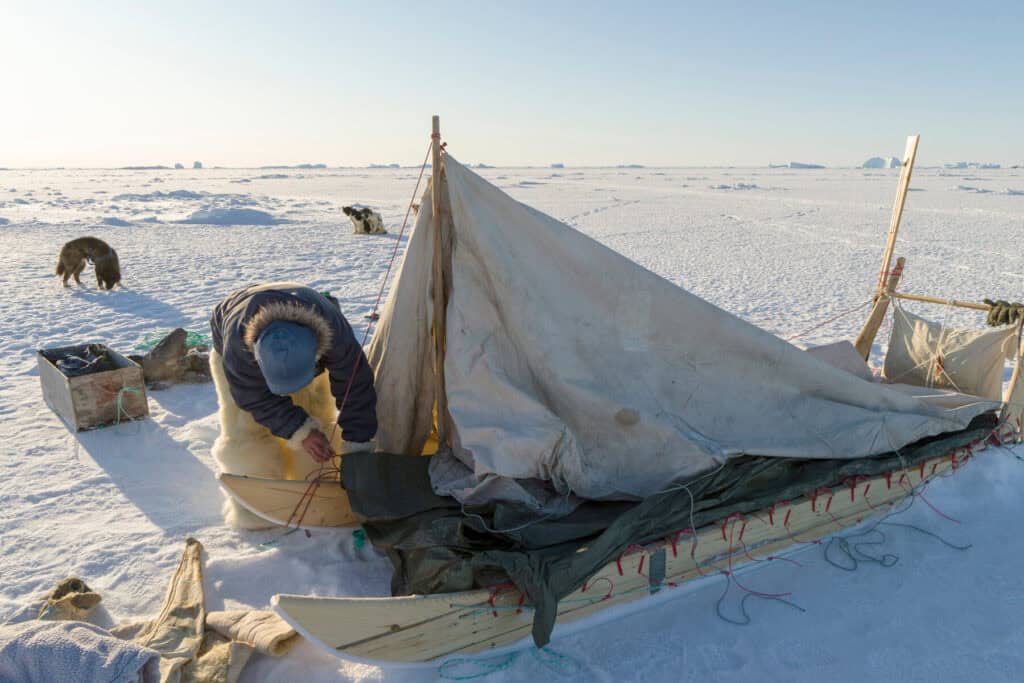
Wildlife culture in Greenland
The Greenlandic Inuit have survived for thousands of years in their harsh Arctic environment because they balance their respect for wildlife with their need to provide food. Today, hunting is controlled by strict quotas; hunting only that which is necessary has always been part of the Inuit culture.
The well known folk tale of Sedna (Mother of the Sea and daughter of Anguta), warns the Inuit what will happen if they do not respect nature. In the tale, all creatures that are hunted by Inuit become entangled in Sedna’s hair because of the Inuit’s lack of respect for them.
With no animals to hunt, the Inuit face starvation and it is only after the intervention of their angakkuq (shaman) that the creatures are released from Sedna’s hair on the condition that the Inuit hunt and fish responsibly. A statue of Sedna can be found in Nuuk’s Colonial harbour.
More information
Visit Greenland is owned by the Government of Greenland and is dedicated to marketing the country’s adventures and opportunities for guests wishing to visit the world’s largest island.
Air Greenland is the national flag carrier of Greenland, having operated flights in and to Greenland for almost 65 years. Air Greenland takes you to Greenland from Denmark, Iceland, and Nunavut in Northern Canada and also operates an extensive domestic flight network with more than 60 destinations.
For more information, check out our guide to Greenland.


